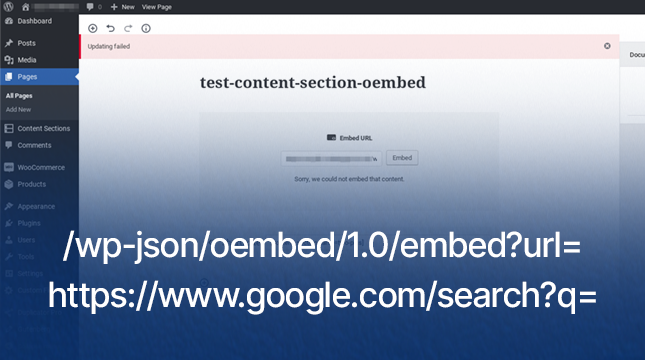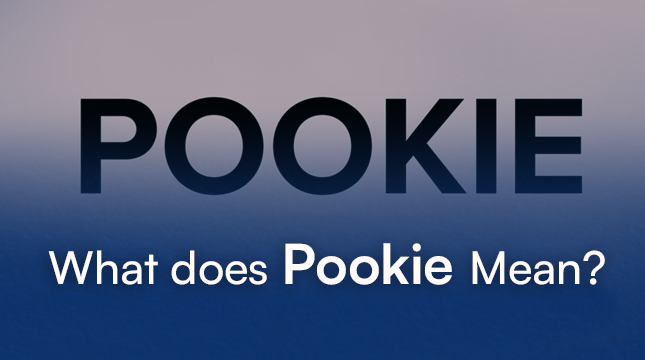This website uses cookies so that we can provide you with the best user experience possible. Cookie information is stored in your browser and performs functions such as recognising you when you return to our website and helping our team to understand which sections of the website you find most interesting and useful.
GET /wp-json/oembed/1.0/embed?url=https://www.google.com/search?q=

In the realm of digital content and web development, oEmbed stands as a powerful tool that simplifies the process of embedding content. But what exactly is oEmbed, and why is it significant? Let’s delve into the intricacies of the URL “/wp-json/oembed/1.0/embed?url=https://www.google.com/search?q=” and uncover its mysteries.
What is oEmbed?
oEmbed is a protocol designed to allow the embedding of content from one site into another with ease. Instead of manually copying and pasting embed codes, oEmbed provides a standardized way to fetch the necessary data to display media content seamlessly. This protocol is widely supported by platforms like YouTube, Twitter, and Instagram, making content sharing a breeze.
Why is oEmbed Important?
The importance of oEmbed lies in its simplicity and efficiency. By using oEmbed, developers and content creators can embed media without dealing with complex code. This not only saves time but also reduces the risk of errors and ensures consistency across different platforms.
Understanding the URL Structure
To truly grasp the power of oEmbed, we need to break down the URL structure: “/wp-json/oembed/1.0/embed?url=https://www.google.com/search?q=“.
Breaking Down “/wp-json/oembed/1.0/embed?url=https://www.google.com/search?q=“
This URL can be divided into several key components:
- /wp-json/: This indicates that the URL is using WordPress’s REST API, which is a powerful way to interact with WordPress programmatically.
- oembed/1.0/embed: This part specifies that we are accessing the oEmbed endpoint, and the version being used is 1.0.
- ?url=https://www.google.com/search?q=: This query parameter specifies the URL of the content to be embedded, in this case, a Google search query.
What is /wp-json/?
/wp-json/ is a prefix used in WordPress to denote that the following path is part of the REST API. This API allows developers to interact with WordPress sites programmatically, making it possible to retrieve, create, update, and delete content remotely.
The Role of oEmbed in WordPress
WordPress leverages the power of oEmbed to make content embedding straightforward and hassle-free.
How WordPress Utilizes oEmbed
When a user pastes a URL from a supported oEmbed provider into the WordPress editor, WordPress automatically fetches the necessary embed code and displays the content. This seamless integration is a testament to the efficiency of oEmbed.
Common Uses of oEmbed in WordPress
oEmbed is commonly used in WordPress to embed videos, social media posts, and other types of media. This feature enhances the visual appeal of websites and enriches the user experience.
Decoding the JSON API
To understand how oEmbed works, we need to look at the JSON API.
What is JSON?
JSON (JavaScript Object Notation) is a lightweight data interchange format that’s easy for humans to read and write, and easy for machines to parse and generate. It’s widely used in web development for transmitting data between a server and a client.
Why JSON is Crucial for oEmbed
JSON is crucial for oEmbed because it allows the efficient transmission of data needed to embed content. When a request is made to the oEmbed endpoint, the server responds with a JSON object containing the necessary information to render the embedded content.
Embedding Content with oEmbed
Let’s explore how to embed content using oEmbed.
How to Embed Content Using oEmbed
To embed content using oEmbed, you simply need to paste the URL of the content into your platform’s editor. The platform then sends a request to the oEmbed endpoint, which returns the embed code needed to display the content.
Supported Platforms for oEmbed
oEmbed supports a wide range of platforms, including:
- YouTube
- Flickr
- SoundCloud This wide support makes it a versatile tool for content creators.
The Google Search URL Component
The URL component “https://www.google.com/search?q=” plays a crucial role in our understanding.
Understanding “https://www.google.com/search?q=“
This part of the URL represents a Google search query. The “q” parameter stands for “query,” and it specifies the search term that Google should use.
How Search Queries Work in Google
When you perform a search on Google, the search engine processes the query and returns relevant results. The “q” parameter is used to pass the search term to Google’s search engine.
Benefits of Using oEmbed
Using oEmbed comes with several benefits.
Simplifying Content Integration
oEmbed simplifies the process of integrating content from various platforms, making it easier for developers and content creators to enrich their sites with multimedia.
Enhancing User Experience
By embedding content seamlessly, oEmbed enhances the user experience by providing interactive and engaging media without requiring users to leave the site.
Challenges and Limitations
Despite its advantages, oEmbed has some challenges and limitations.
Common Issues with oEmbed
Common issues with oEmbed include:
- Incompatibility with certain platforms
- Errors due to incorrect URLs
- Limitations in customization
Troubleshooting Tips
To troubleshoot oEmbed issues:
- Ensure the URL is correct and supported
- Check for any restrictions set by the content provider
- Update WordPress and plugins to the latest versions
Advanced oEmbed Techniques
For those looking to go beyond the basics, here are some advanced techniques.
Customizing oEmbed Responses
Developers can customize oEmbed responses by creating custom handlers or modifying existing ones. This allows for tailored embedding experiences.
Extending oEmbed Functionality
oEmbed functionality can be extended through plugins and custom code, enabling support for additional content types and providers.
Security Considerations
Security is paramount when using oEmbed.
Ensuring Safe Embedding Practices
To ensure safe embedding practices:
- Only use trusted content providers
- Validate and sanitize URLs before embedding
- Keep your platform and plugins updated
Preventing oEmbed Exploits
Preventing oEmbed exploits involves:
- Implementing strict input validation
- Regularly monitoring and updating security measures
- Being aware of common vulnerabilities
Future of oEmbed
The future of oEmbed looks promising with several emerging trends.
Emerging Trends
Emerging trends include:
- Increased support for new content types
- Enhanced customization options
- Improved security measures
Potential Innovations
Potential innovations in oEmbed include:
- AI-driven content embedding
- Real-time content updates
- Advanced analytics for embedded content
FAQs About oEmbed
Here are some common questions and expert answers about oEmbed.
Common Questions
- What is the purpose of the “/wp-json/oembed/1.0/embed” endpoint?
- Can I use oEmbed for all types of content?
- How do I troubleshoot oEmbed issues in WordPress?
- What are the security risks associated with oEmbed?
- How is oEmbed evolving with new web technologies?
Conclusion
In conclusion, oEmbed is a powerful tool that simplifies the process of embedding content across platforms. By understanding the intricacies of URLs like “/wp-json/oembed/1.0/embed?url=https://www.google.com/search?q=“, developers and content creators can leverage oEmbed to enhance their websites and provide a richer user experience. As web technologies continue to evolve, oEmbed will undoubtedly adapt and grow, offering even more possibilities for seamless content integration.

Let's Start Your Project
Get free consultation for your digital product idea to turn it into reality!
Get Started





